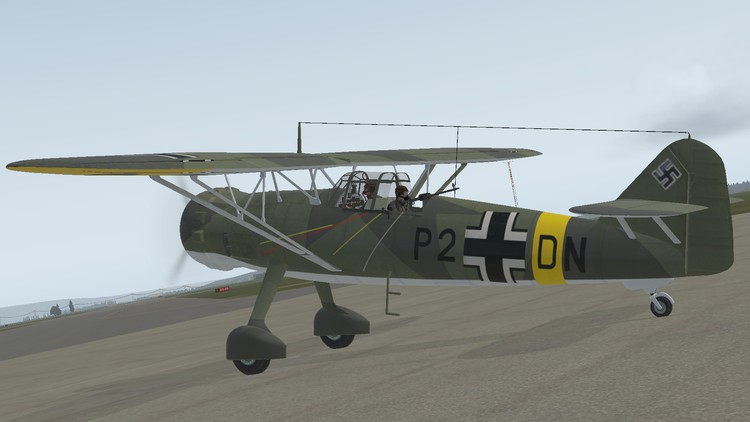
Flying lessons old school style. Stick and rudder flying.
What you will learn
Basic aircraft flying skills
Description
If you have never flown any aircraft before but want to learn, checkout this course. If you have a joystick the aircraft is a free download from X-plane 11 and it is really easy to fly. Try to copy what I do or simply watch and learn. I have another course on a much more modern Cessna 172 which goes through the pilots licence training in much more detail.
The Henschel Hs 126 was a German two-seat reconnaissance and observation aircraft of World War II that was derived from the Henschel Hs 122. The pilot was seated in a protected cockpit under the parasol wing and the gunner in an open rear cockpit. The prototype aircraft frame was that of a Hs 122A fitted with a Junkers engine. The Hs 126 was well received for its good short take off and low-speed characteristics which were needed at the time. It was put into service for a few years, but was soon superseded by the general-purpose, STOL Fieseler Fi 156 Storch and the medium-range Focke-Wulf Fw 189 “flying eye”.
By the time the Hs 126 A-1 joined the Luftwaffe, the re-equipping of reconnaissance formations was already well advanced, and by the start of World War II in September 1939, Germany already had several good short range observation and long range recon aircraft. Late in the war, it was used in glider tug and night ground attack roles, but production of the Hs 126 ended in 1941 and the type was retired from the front line in 1942. On 12 September 1943 Henschel 126s were used to tow 10 DFS 230 attack gliders from Pratica Di Mare airfield near Rome to the Gran Sasso on a raid to rescue Benito Mussolini. Mussolini had been imprisoned there after being deposed by the Grand Council of Fascism, followed by a decree from the King of Italy. The Henschel was a smaller tow plane compared the usual Junkers Ju 52 three-engine tow plane and struggled to gain altitude to clear the mountains on the way. This led to confusion when the lead Kette of three gliders turned to gain altitude allowing Otto Skorzeny’s group of three gliders to assume the lead.
Content
Introduction